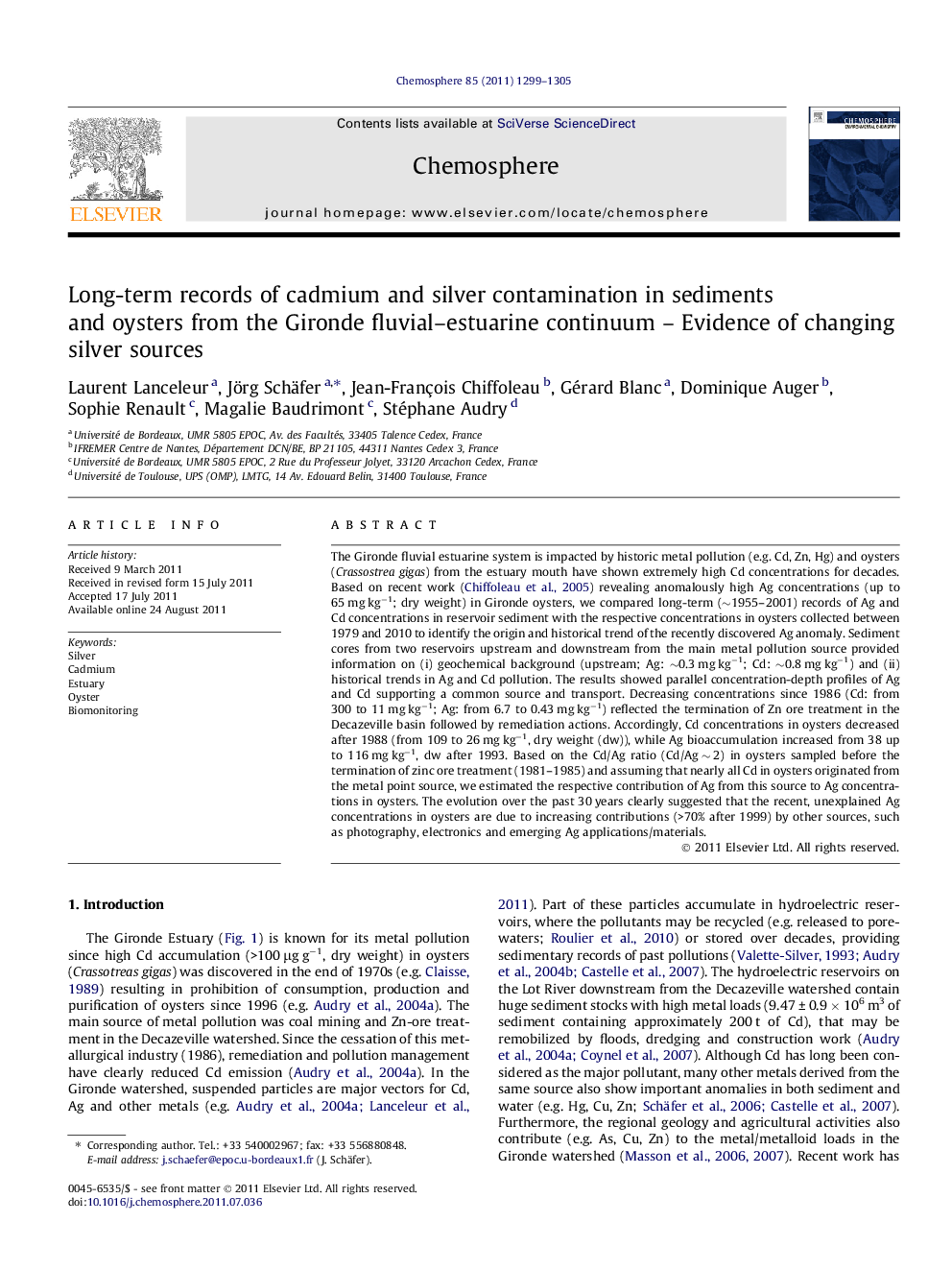| کد مقاله | کد نشریه | سال انتشار | مقاله انگلیسی | نسخه تمام متن |
|---|---|---|---|---|
| 4410119 | 1307530 | 2011 | 7 صفحه PDF | دانلود رایگان |

The Gironde fluvial estuarine system is impacted by historic metal pollution (e.g. Cd, Zn, Hg) and oysters (Crassostrea gigas) from the estuary mouth have shown extremely high Cd concentrations for decades. Based on recent work ( Chiffoleau et al., 2005) revealing anomalously high Ag concentrations (up to 65 mg kg−1; dry weight) in Gironde oysters, we compared long-term (∼1955–2001) records of Ag and Cd concentrations in reservoir sediment with the respective concentrations in oysters collected between 1979 and 2010 to identify the origin and historical trend of the recently discovered Ag anomaly. Sediment cores from two reservoirs upstream and downstream from the main metal pollution source provided information on (i) geochemical background (upstream; Ag: ∼0.3 mg kg−1; Cd: ∼0.8 mg kg−1) and (ii) historical trends in Ag and Cd pollution. The results showed parallel concentration-depth profiles of Ag and Cd supporting a common source and transport. Decreasing concentrations since 1986 (Cd: from 300 to 11 mg kg−1; Ag: from 6.7 to 0.43 mg kg−1) reflected the termination of Zn ore treatment in the Decazeville basin followed by remediation actions. Accordingly, Cd concentrations in oysters decreased after 1988 (from 109 to 26 mg kg−1, dry weight (dw)), while Ag bioaccumulation increased from 38 up to 116 mg kg−1, dw after 1993. Based on the Cd/Ag ratio (Cd/Ag ∼ 2) in oysters sampled before the termination of zinc ore treatment (1981–1985) and assuming that nearly all Cd in oysters originated from the metal point source, we estimated the respective contribution of Ag from this source to Ag concentrations in oysters. The evolution over the past 30 years clearly suggested that the recent, unexplained Ag concentrations in oysters are due to increasing contributions (>70% after 1999) by other sources, such as photography, electronics and emerging Ag applications/materials.
► Ag and Cd records in river sediment support common release by former ore-treatment.
► Cd levels in oysters reflect Cd decrease in sedimentary records after 1988.
► Ag levels in oysters reach maximum values between 1993 and 2003.
► Ag accumulation in oysters was attributed to additional sources.
Journal: Chemosphere - Volume 85, Issue 8, November 2011, Pages 1299–1305